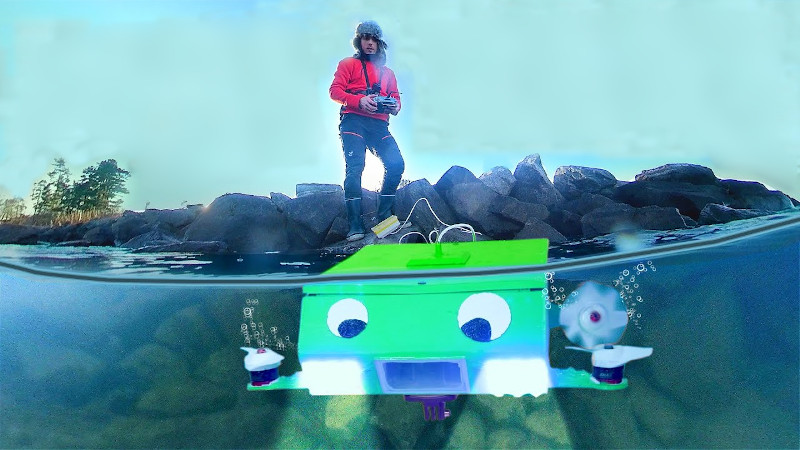Underwater Remote Operated Vehicles, or ROVs as they’re typically known, generally operate by tether. This is due to the poor propagation of radio waves underwater. [Simon] wanted to build such a drone, but elected to go for an alternative design with less strings attached, so to speak. Thus far, there have been challenges along the way. (Video, embedded below.)
The underwater drone uses a 3D printed chassis, replete with googly eyes that go a long way to anthropomorphizing the build. Four motors are used for control, with two for thrust in the horizontal plane and two mounted in the vertical plane for attitude control. This allows the drone to be set up at neutral buoyancy, and moved through the water column with thrust rather than complicated ballast mechanisms. The build aims to eschew tethers, instead using a shorter cable to link to a floating unit which uses radio to communicate with the operator on the shore.
The major struggle facing the build has been sealing the chassis against water ingress. This is where the layered nature of 3D printing is a drawback. Even with several treatments of paint and sealant, [Simon] has been unable to stop water getting inside the drone. Further problems concern the excess amount of ballast required to counteract the drone’s natural buoyancy due to displacement.
Regardless of the struggles, we look forward to seeing the next revision rectify some of the shortcomings of the current build. We’re sure [Simon’s] experience building an electric surfboard will come in handy. Video after the break.

















If that design is improved, waterproofed enough to be cleaned with Karcher then it could be used to inspect septic tanks.
Just judging by the photo in the article, his little acrylic window there is just glued to the flat front. Having lips that use the water pressure from all sides to push the seal tighter would help. He’s going to have water sneak in from the side through the glue with 2 flat surfaces pushed together like that. The pressure from the front seems like it would help, but the pressure from the sides was probably deemed inconsequential when it is not. Ever wear goggles in the water? Even with high pressure on the front, the pressure from the sides leaks on by. He’s going to need at least a tongue and groove with an o-ring.
Additionally I recommend looking to plumbing fittings for inspiration. If they can keep water in, they can keep water out. (usually)
I’d just fill it with mineral oil. And put electronics in top part. As long as it stays vertical – electronics is insulated, oil-filled cavity survives high pressure better, and as water is more dense – it will go to bottom part of the device.
It should be named Boaty McBoatface
There is a reason such things are usually tubular or spherical with only compression of circular seals. Water ingress can be controlled by pressurizing, but a flat sided box doesn’t handle that very well. 15 psi is enough to reach 30 feet depth. Infiltration along insulation between wire strands is also a problem.
Congrats on the effort so far.
I think that drone looks really cute.
Kinda reminds me of Mr. Gimmick. ^^
Anyway, congrats on a job well done.
Really enjoyed watching the video, too.